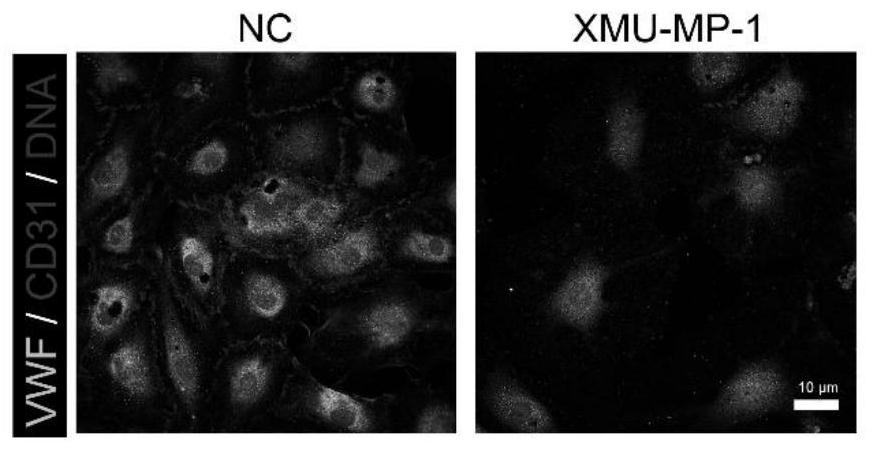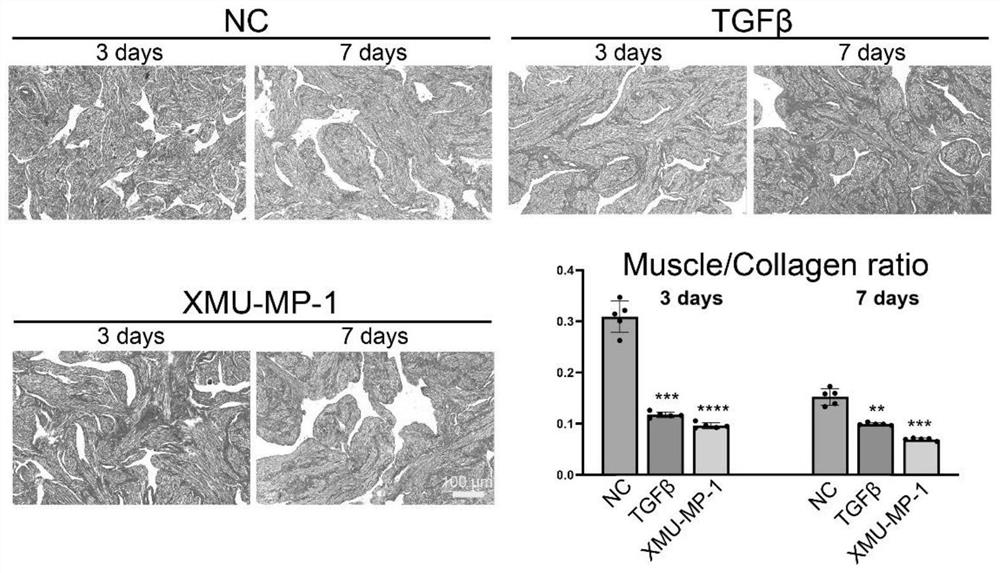Method for establishing cavernous body fibrosis disease model
A technology for fibrotic diseases and model establishment, which is applied in the fields of biochemical equipment and methods, pharmaceutical formulations, and preparations for in vivo tests, etc., to achieve the effects of convenient administration, easy dosage control, and short modeling time.
- Summary
- Abstract
- Description
- Claims
- Application Information
AI Technical Summary
Problems solved by technology
Method used
Image
Examples
Embodiment 1
[0024] Materials and Methods
[0025] 1. Human cavernous endothelial cell isolation and XMU-MP-1 treatment
[0026] A fresh corpus cavernosum tissue sample, approximately 1 x 1 cm in size, was first immersed in 15 ml of PBS and shaken vigorously to remove residual blood. The tissue was cut into 1×1 mm pieces and digested with 2.5 mg / ml collagenase type I, 4 mg / ml collagenase IV, 0.1 mg / ml neutral protease and 2 mg / ml DNase I enzyme for 20 min at 37°C. Subsequently, the cell suspension was filtered through a 40 mm nylon mesh, and cells were sorted by MACS and a dead cell removal kit (Miltenyi Biotec) to remove dead cells. The digested cell suspension was washed and resuspended in EGM-2 (CC-3202; Lonza) medium. Cell colonies began to appear around day 5 of culture, followed by the addition of fibroblast inhibitor for 7-10 days. When the isolated cell clones began to confluent with each other, the ENC clones were labeled and digested using a cloning cylinder (C7983-50EA; 809Si...
PUM
 Login to View More
Login to View More Abstract
Description
Claims
Application Information
 Login to View More
Login to View More - R&D
- Intellectual Property
- Life Sciences
- Materials
- Tech Scout
- Unparalleled Data Quality
- Higher Quality Content
- 60% Fewer Hallucinations
Browse by: Latest US Patents, China's latest patents, Technical Efficacy Thesaurus, Application Domain, Technology Topic, Popular Technical Reports.
© 2025 PatSnap. All rights reserved.Legal|Privacy policy|Modern Slavery Act Transparency Statement|Sitemap|About US| Contact US: help@patsnap.com


